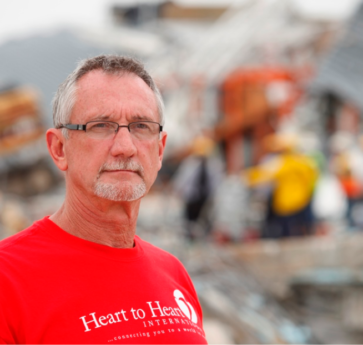HOME | ABOUT US | MEDIA KIT | CONTACT US | INQUIRE
HOME | ABOUT US | MEDIA KIT | CONTACT US | INQUIRE
Physician Gary Morsch, who led a COVID Care Force team of 12 medical volunteers to combat the coronavirus pandemic at its New York epicenter—and preparing to head west to take up the fight again at a hard-hit Navajo Indian reservation. Ingram’s caught up with him before his Tuesday-night flight from LaGuardia International Airport, where he had a few observations from his experience there that should resound with health-care providers and residents of Kansas City.
 Q. Any idea how many patients your volunteer team treated over the past two weeks?
Q. Any idea how many patients your volunteer team treated over the past two weeks?
A. Well, of course when you’re in the emergency room, you can only focus on one patient at a time, but dozens each shift when you’re working elsewhere in the hospital. I think in my notes, the team as a whole had seen hundreds of patients, but it may be more than that.
Q. As the intensity of infections eased a bit, did you find any renewed optimism about containing the spread of the virus?
A. Remember when the projections first came out, with some crazy number 400,000 deaths expected, then 60,000 by August, and still, everybody thought, “no way.” Now we’re over 40,000 as a country, and we’ll definitely be ahead of that. Even in New York, I’d expect another 10,000 will die in the next couple of months.
Q. Is it too early to be optimistic that this is under control?
A. Absolutely. It depends on what your idea of reopening business is, or going to back to a normal life, however you define it. But every doctor I’ve talked to about it, they just shake heads and go “Really? Who would do something like this?” What has worked were aggressive stay at home policies that were really enforced by social expectations; everybody took it seriously and stayed home for about two weeks. But now the traffic is back to gridlock, even in New York.
Q. You expect any decline to be short-lived?
A. When you have a governor in Georgia scoffing at the science and declaring they’re going to be open again, resting business is more important than containing this, yes, I do expect a resurgency, even in New York. By July, I believe, the numbers will start ticking back up.
Q. What lessons has your experienced taught you that may be of value to health-care professionals in Kansas City, especially the executives trying to manage this?
A. Remain prepared for a surge. I’m pessimistic because of the way some politicians are handling things’ there are too many who don’t seem willing to pay the price for what needs to be done. I know it’s a high price, one no human being ever thought he’d have to pay, to stay home, perhaps lose their job, face bankruptcy. It’s a medical, social and economic disaster.
Q. What have you heard from hospital contacts in the Midwest as the continue to prepare for this?
A. They’re fighting for their lives to say open, especially in the rural areas. KU Health System, Olathe Health, they’re going to get through this. But in smaller community hospitals, business is dropping—people are afraid to go to the hospital or ER; they don’t want to catch this if someone who was sick was there ahead of them. They have canceled all the elective surgery, but suddenly, there are no patients. A lot of those hospitals live almost month to month financially, anyway. But my message to those CEOs would be, you may not think you can survive, but if you can find a way to hang on, keep the doors open, get the banks to lend you money, I think there will be public support to keep those hospitals open. Do what you have to do to keep those doors open, because if they close, it will be a lot harder to get the support to open them again.
Q. How will this change health-care delivery going forward?
A. The health clinics in this country have been underfunded for years. This will catch everybody’s attention.
Q. How did your experience of the commitment shown by front line workers in New York change the way you look at their contributions?
A. The think I learned coming to New York is a lesson that managers and chief medical officers need to pay attention to: The work force that got hit hardest by this, they were doing their jobs—nurses, respiratory therapists, doctors. They are the real heroes. They stayed with it. None that I know of quit and said they were going home to hunker down and wait until it was over. I’ve worked in combat hospitals, and the fact is, even there you didn’t see as many people die as I have here in two weeks. In just one month, New York has had well over 10,000 deaths—that’s one-sixth of what we lost in Vietnam, over a period of a decade or more. I think there will be a lot of PTSD from this, and the people who carried most of the brunt are the nurses.